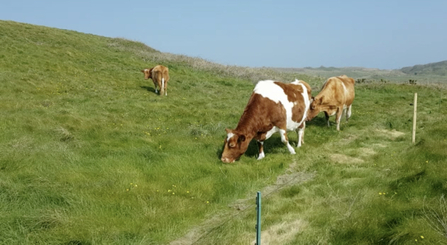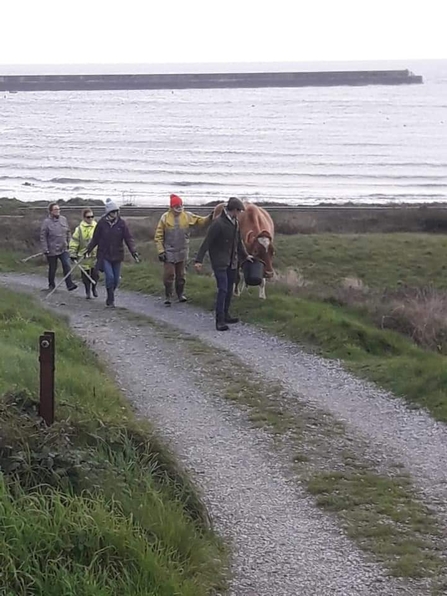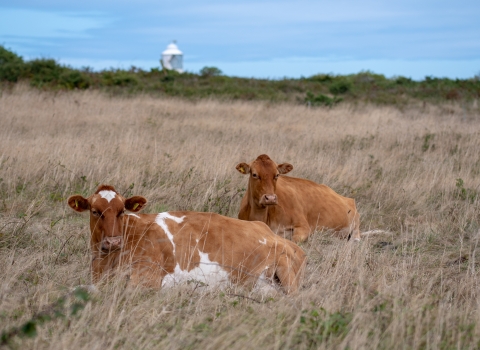With over 60 ha of coastal grassland needing management our conservation herd keeps large areas of the island's grasslands rich for wildlife and us all entertained when on the move.
The Alderney Grazing Animals Project (AGAP) was launched in 2003, with the principal aim of maintaining diversity within the species rich dune grassland of the island.
By using traditional grazing the AWT has been able to minimise the need for large scale machinery to maintain Alderney’s most biologically diverse habitats, especially within its reserves. The cattle also ensure that nutrients taken from the land are returned in the most direct manner, thus helping to promote a wider range of insects that in turn help to regenerate soils, pollinate wildflowers and feed the island’s mammals and birds.

Good quality dune grasslands, such as Longis Common, are nationally scarce; and in the UK many are designated as Sites of Special Scientific Interest (SSSIs). The historical grazing of Longis Common ceased after the Second World War. The land was left fallow and consequently overtaken by tall, rank grassland, pocked by patches of dense bracken and bramble. Delicate, threatened plant species, including rarities such as Small Hare’s-ear and Bastard Toadflax, were increasingly crowded out by scrub, and areas of the Common became inaccessible to the public.

Historically the herd was largely made up of juvenile animals which the AWT raised for beef, a very popular bi-product of the AGAP project, which was then used by the AWT for our events. However, now the cows live out their days for conservation purposes only. Today the AGAP herd consists of a few Guernsey cattle, many of which are barren females loaned from the Kiln Farm Dairy herd, the main farm on the island.
The success of the AGAP project is monitored regularly through wildflower surveys, with the reports available below. Over time these indicate that there has been a significant increase in the total coverage of target species, such as thyme, and a reduction of non-desirables, such as bracken and bramble. The cattle also graze the outer areas of the reedbed at Longis, allowing the reeds to regrow and remain a healthy habitat important for many species.

